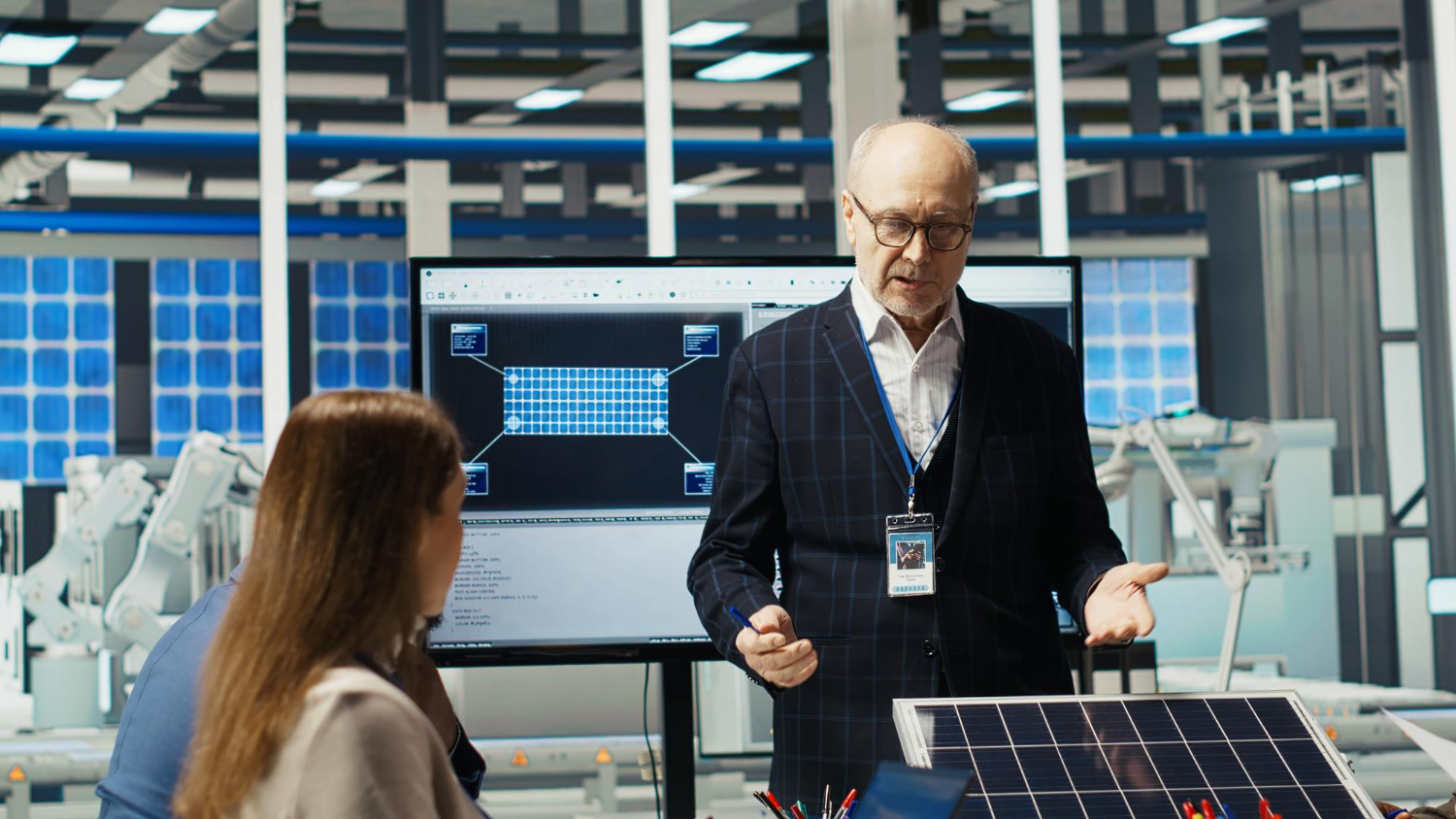
With increasing energy demands and rising electricity tariffs, industries are turning to solar power as a smart and sustainable energy source. If you’re looking for long-term savings and operational efficiency, industrial solar panel installation offers an unbeatable solution.
Whether you’re a factory owner, a commercial builder, or a corporate facility manager, this guide will help you understand the process, advantages, and considerations when switching to solar.
☀️ What Is Industrial Solar Panel Installation?
Industrial solar panel installation refers to the setup of large-scale photovoltaic (PV) systems on the rooftops or open land of industrial units to generate clean electricity. These systems reduce dependence on traditional grid power and cut long-term operational expenses.
Unlike residential systems, industrial setups are designed for high-capacity performance—usually ranging from 10 kW to several megawatts.
🏭 Why Solar Is a Smart Choice for Industries
Here’s why industries across India are choosing solar energy:
✅ 1. Massive Cost Savings
Industrial units consume huge amounts of electricity. Solar panels reduce monthly bills by up to 80%, freeing up cash flow for other investments.
✅ 2. Energy Security
Solar power protects your factory or unit from grid fluctuations, outages, and peak demand charges.
✅ 3. Environmental Commitment
Using renewable energy showcases your brand’s commitment to sustainability, helping meet CSR goals and environmental certifications.
✅ 4. ROI Within 3–5 Years
While the initial setup is significant, the payback period is relatively short. Once the system breaks even, electricity is practically free for the next 20–25 years.
🛠️ How Industrial Solar Panel Installation Works
Here’s a step-by-step overview of how your factory or commercial property can go solar:
Step 1: Energy Audit & Site Survey
A solar installer performs a detailed audit of your facility, checking:
Roof space or open ground area
Direction and shading
Current electricity load and usage patterns
Step 2: System Design
The installer designs a tailored system based on the audit findings.
PV modules (monocrystalline or polycrystalline)
Central/string inverters
Mounting structures
Cables, junction boxes, safety equipment
Step 3: Permits & Approvals
The installer helps you secure local DISCOM permissions, net metering agreements, and necessary compliance approvals.
Step 4: Installation
The physical installation typically takes 5–15 days, depending on system size. It includes:
Mounting the panels
Running wiring and grounding
Connecting inverters and switchgear
Step 5: Testing & Commissioning
The system is tested for output, and performance is validated against design expectations.
⚡ System Types for Industrial Use
You can choose from three types of solar setups for your industrial site:
1. On-Grid Systems
Most popular for factories with reliable grid access
Surplus power is fed back to the grid (net metering)
No batteries needed
2. Off-Grid Systems
Ideal for remote locations or critical operations
Includes battery storage for backup
Higher upfront cost due to storage requirements
3. Hybrid Systems
Combines grid-tie + battery backup
Flexibility to use solar, battery, or grid
Great for industrial setups with fluctuating load profiles
🔍 Key Components in an Industrial Solar Setup
PV Modules—High-efficiency panels (mono/bifacial) to maximize space output
Inverters—Convert DC to usable AC (central inverters for large projects)
Mounting Structures—Galvanized iron or aluminum frames for strength
SCADA/Monitoring Systems—Track energy generation in real time
Surge Protectors & Earthing—For safety and system longevity
📈 What Capacity Does Your Industry Need?
The size of your system depends on your average monthly consumption:
Small factory (20,000–30,000 units/month): kW to 100
Medium industry (50,000–80,000 units/month): 200 to 500
Large industry (1 lakh+ units/month): 1 and above
Installers perform a load analysis and roof strength check to recommend the right system size.
💬 FAQs: Industrial Solar Panel Installation
Q1: How much space is needed for 1 MW solar capacity?
Depending on the efficiency of the panels, 4–5 acres of open land or 10,000+ sq. ft. of rooftop space are typically required.
Q2: Is net metering available for industrial solar?
Yes, most states in India allow industries to export unused power to the grid via net metering.
Q3: How long do industrial solar panels last?
Panels have a performance warranty of 25 years and typically last even longer with routine maintenance.
Q4: Can I expand my solar system later?
Yes. You can scale up systems based on increased load or facility expansion because they are modular.
💼 Best Practices for Industrial Solar Projects
Always choose MNRE-approved panels and inverters
Select an EPC partner with industrial installation experience
Ensure your site is free from shade, water retention, or structural issues
Install surge arresters and fire protection systems
Track output via smart monitoring software for maximum yield
🌿 Real Benefits: Industrial Solar ROI Breakdown
Let’s consider a 100 kW solar system:
Average monthly savings: ₹80,000–₹100,000
Yearly savings: ₹10–₹12 lakhs
Breakeven: 3 to 4 years
Panel lifespan: 25+ years
Maintenance: Minimal
Imagine saving ₹2–₹3 crore in energy costs over two decades. That’s the power of industrial solar.
🚀 Ready to Get Started?
With falling solar prices and rising energy costs, now is the best time to explore industrial solar panel installation.
What should be your initial step? Connect with an expert EPC provider who understands the unique challenges of commercial energy needs. They’ll guide you through the site evaluation, design, subsidy claims (if applicable), and full execution.
Go beyond saving money—gain control over your energy future.
